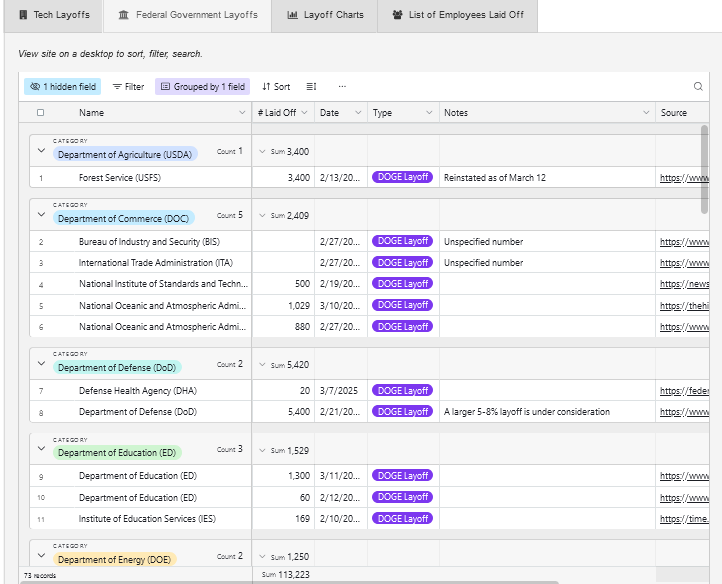Layoffs.fyi is keeping track of US federal government layoffs. The website was originally created to track tech layoffs and has been featured in the Wall Street Journal, Bloomberg, and NY Times.
Category: Featured
-
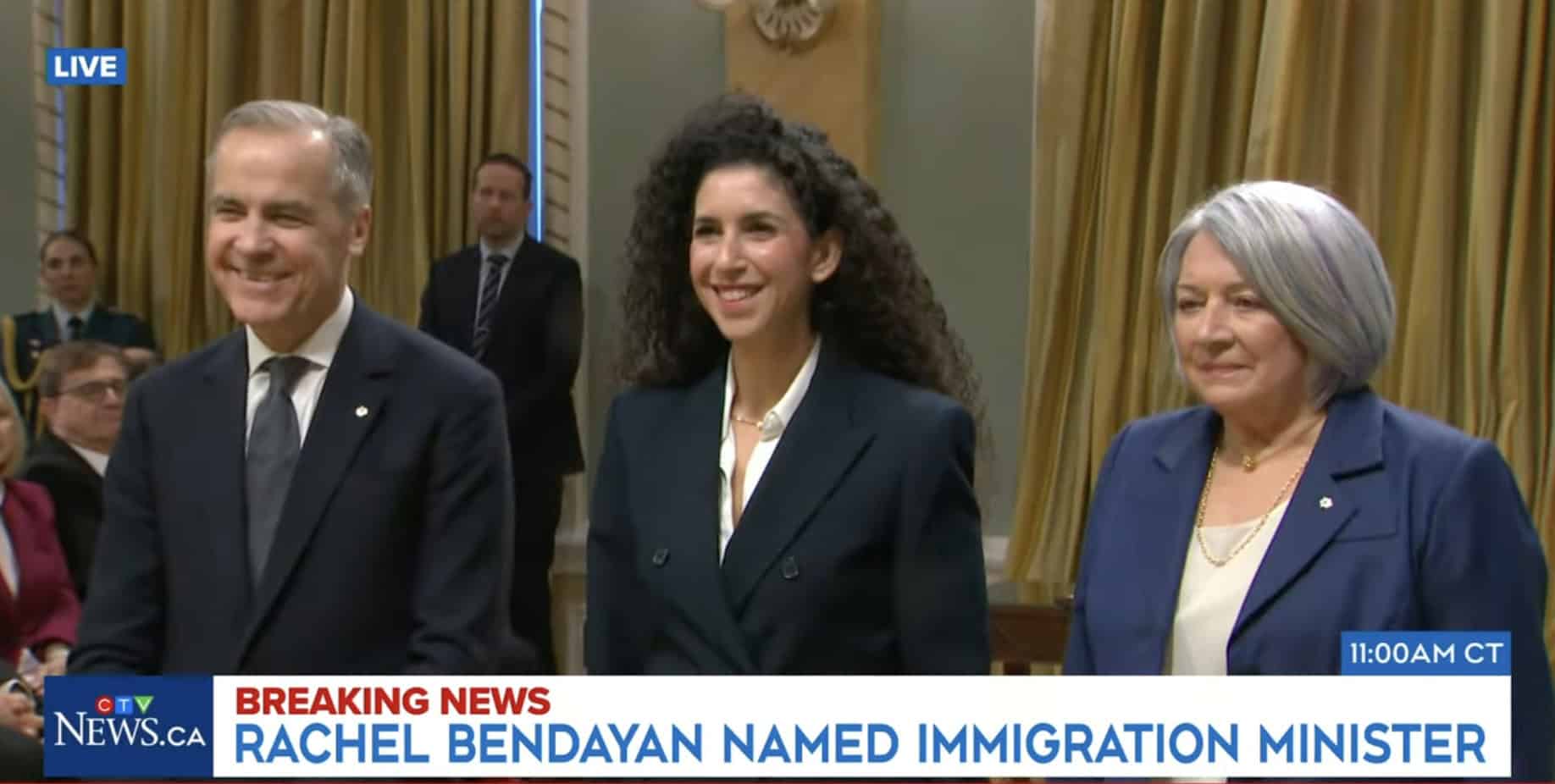
Marc Miller removed as Canadian immigration minister
The cabinet reshuffle came upon Carney’s swearing-in ceremony as Canada’s new Prime Minister on Friday 14 March, following his landslide victory in the Liberal leadership race announced on March 10.
Miller has been replaced by Rachel Bendayan, formerly the minister of official languages and associate minister of public safety under Trudeau. Bendayan is one of 11 female ministers in Carney’s 24-member cabinet.
Holding various government positions since being elected to parliament in 2019, Bendayan was the first Canadian of Moroccan descent to join the federal government.
While a change of tack regarding immigration is unlikely until after the federal election, international education stakeholders are hopeful about Miller’s successor who will head up Immigration, Refugees and Citizenship Canada (IRCC).
“Canada is due for a reset on the immigration file. The former minister rode a wave of negative sentiment to make Canada feel increasingly unwelcoming to international students and their family members,” Canadian immigration lawyer Matthew McDonald told The PIE News.
“My hope is that Minister Rachel Bendayan will bring a more positive spirit to the country’s immigration conversation,” he added.
Based on Bendayan’s role as minister for official languages, McDonald said he expected she would continue IRCC’s commitment to the prominence of the French language in permanent residence programs.
Bendayan’s legal background also suggests that she may continue the “technocratic approach” to policy seen of her predecessor, he added.
The former minister rode a wave of negative sentiment to make Canada feel increasingly unwelcoming to international students
Matthew McDonald, Canadian Immigration Services
“We are changing how things work, so our government can deliver to Canadians faster – and we have an experienced team that is made to meet the moment we are in. Our government is united and strong, and we are getting right to work,” said Prime Minister Carney.
Carney, formerly head of the Bank of Canada and Bank of England, and a relative political newcomer, will succeed Justin Trudeau as relations hot up between the US and Canada over Donald Trump’s trade war against its northern neighbour.
Trudeau’s large cabinet was made up of 37 ministers, including his longtime personal friend and the best man at his wedding, immigration minister Marc Miller.
Carney himself never sat on Trudeau’s cabinet, which was part of his appeal to some Liberal voters.
While several Trudeau stalwarts have been dropped from Carney’s cabinet, there is still considerable overlap and only three new faces, which Carney’s team said would ensure “continuity”.
We are changing how things work, so our government can deliver to Canadians faster
Mark Carney, Canadian Prime Minister
In the absence of an education minister at the federal level, Miller has delivered many of the turbulent policy changes in international higher education over the past 14 months. He has become notorious in the sector for repeatedly doing so on a Friday afternoon.
During this time, Canadian institutions have been delivered study permit caps, twice, restrictions on post-graduate work opportunities and procedural changes around recruiting and enrolling international students, among myriad further disruptions.
Against the backdrop of a recent increase in anti-immigration sentiment across Canada, McDonald said that Bendayan had “the opportunity to seize this existential moment for Canada and reinforce that we are a country whose past, present, and future is an immigration story”.
Previous statements made by Carney about tackling Canada’s housing crisis, prioritising those already in Canada for permanent residency and reducing temporary foreign worker levels suggest the government’s ongoing immigration policy will largely align with Miller’s going forward.
While Carney has not explicitly said anything about limiting international students, he has previously voiced concerns about institutions’ reliance on international students and has advocated for increased funding for postsecondary education.
Under Canada’s current immigration levels plan, the government is aiming to reduce temporary residents including international students and temporary workers to 5% of the total population by 2027.
Canada’s next federal election is currently scheduled for October, though there is speculation that Carney could call an election before parliament is expected to return on March 24.
-
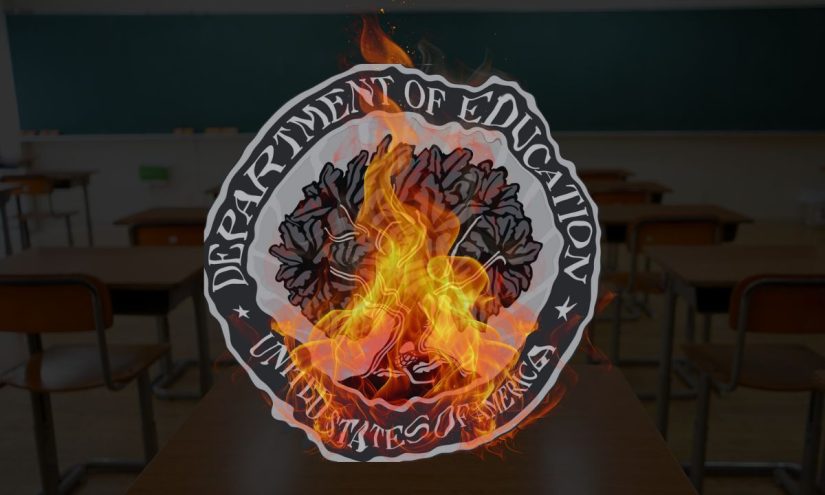
Dismantling Ed Dept. Will Harm More Than 26 Million Kids — and America’s Future – The 74
Get stories like this delivered straight to your inbox. Sign up for The 74 Newsletter
The layoffs of half of the employees of the U.S. Department of Education clearly demonstrate the Trump administration’s follow-through on one of Project 2025’s mandates, which intends to eliminate the resources, protections and opportunities that millions of children and families across this nation rely on.
It is evident that the White House will not stop until it wipes out the most basic protections and supports for the American people, including the youngest children. The first step was the attempt to defund Head Start and Early Head Start, impacting 800,000 young children across the nation. This order was halted by a federal judge in Washington, thanks to the lawsuits filed by Democracy Forward and attorneys general from 23 states.
The mass layoffs will severely hamper the department’s ability to execute on its core responsibilities. This move is a direct assault on millions of students, teachers and families. It is clearly a precursor to dismantling the department without congressional consent, which would have an even more devastating impact. The department serves and protects the most vulnerable children and young adults, ensuring that they have equal access to education. This includes:
- 26 million students from low-income backgrounds — more than half of all K-12 students — who rely on the department for reasonable class sizes; school meals; tutoring; afterschool and summer programs; school supplies such as laptops and books; parent engagement programs; and, in some cases, transportation
- 9.8 million students enrolled in rural schools
- 7.4. million students with disabilities
- 5 million English learners
- 1.1 million students experiencing homelessness
- 87 million college students who receive Pell Grants and student loans
The department was created in 1980 with a single, crucial purpose: to ensure equal access to education and to promote educational excellence throughout the nation. Its creation followed decades of systemic inequities that left children in disadvantaged communities without the same learning opportunities as their more privileged peers. The department’s work has been a critical safeguard against discrimination in schools, whether on the basis of race, disability, gender or income.
Without the federal government’s intervention and oversight, the more than 13 million children who live in poverty would be even more vulnerable to systemic inequities. The department ensures that federal dollars are distributed to those students most in need, ensuring that underserved children have the same opportunities for success as their wealthier peers. Without the federal oversight and the department’s support, these students will fall even further behind, and the national achievement gap will grow wider.
The federal government is the only entity that can ensure a baseline level of educational equity across the entire nation. The department holds states accountable for ensuring that all children, regardless of where they live or what their socioeconomic status may be, receive a quality education. If this accountability is removed, the children most at risk — those in underfunded schools, children of color, children with disabilities, English learners and those experiencing homelessness — will be the first to suffer. These children would be denied the critical services and protections they need to succeed in school and in life.
Moreover, the president’s plan to turn education policy over to the states would completely dismantle the federal safety net that ensures that the most vulnerable children are not left behind. Each of the 50 states has different priorities, resources and political climates. While some might be able to provide excellent educational opportunities, others will leave children behind, particularly in rural or economically disadvantaged areas. Inequities between states could widen to an intolerable degree, and the resulting lack of uniform educational standards would only further disadvantage the children who need the most help.
To be clear, the department cannot be dissolved at the whim of a sitting president. Under the Constitution, only an act of Congress can create or dismantle a federal agency. The president does not have the unilateral power to eliminate an entire federal institution that serves the educational needs of millions of children across this country. Attempting to do so would not only undermine the law, but also inflict tremendous harm to the very foundation of America’s educational system.
The idea that dismantling the department could somehow improve that system is not only misguided, but dangerously naïve.
It’s vital that we, as a nation, recognize the long-term damage this action would cause. The attempt to dismantle the Department of Education is not just an attack on a government agency — it is an attack on the future of America’s children.
To parents across the country: This policy is not only unconstitutional — it is a grave threat to your children’s future. Whether your child is in a classroom in New York, Los Angeles or a small town in the Midwest, the U.S. Department of Education has worked to ensure that their educational opportunities are protected, funded and regulated. A president who seeks to eliminate this essential agency is jeopardizing the future of every single student in America.
This is why we must all rise up and make our voices heard. We must demand that our leaders stop this dangerous plan in its tracks, that they fix what isn’t working and that they use this opportunity to reimagine public education and invest in a more effective, equitable system that gives all children the opportunity to succeed.
Get stories like these delivered straight to your inbox. Sign up for The 74 Newsletter
-

Immigration policies in focus as Mark Carney sworn in as Canadian PM
Succeeding Justin Trudeau as Canada’s 24th Prime Minister, Carney’s swearing-in ceremony was conducted by governor general Mary Simon at Rideau Hall in Ottawa.
Carney’s appointment as Canada’s leader comes at a time when the country is navigating through an increasingly tumultuous relationship with its closest neighbour and ally, the United States.
Canada’s ties with the US have worsened after President Donald Trump imposed steep tariffs on Canadian goods and floated the idea of integrating Canada into the US, sparking strong backlash.
Considered a political newcomer, who played significant roles as the governor of the Bank of Canada and the Bank of England between 2008 to 2020, Carney is known for having a tough stance on immigration.
Calling Canada’s immigration policy “failures of executions”, Carney stated that Canada has taken in more people than its economy has been able to handle.
“I think what happened in the last few years is we didn’t live up to our values on immigration,” he said at a Cardus event – a Christian non-partisan think tank – in November last year, according to Canadian media reports.
“We had much higher levels of foreign workers, students and new Canadians coming in than we could absorb, that we have housing for, that we have health care for, that we have social services for, that we have opportunities for. And so we’re letting down the people that we let in, quite frankly.”
Carney’s statement suggests that he will uphold the Canadian federal government’s plan to reduce immigration targets over the next three years.
Recently, the federal government announced a shift in its immigration strategy, cutting the number of newcomers by 21% – from approximately 500,000 in 2024 to 395,000 in 2025 and 380,000 in 2026.
In its race to reduce temporary residency numbers and overall inflow of immigrants, international students in Canada have faced the brunt of policy changes in the country.
Canada has imposed more caps on study permits, eliminated fast-track study permit processing, increased PGWP eligibility and English proficiency requirements, in an effort to “align its immigration planning with capacity”.
Over the past year, policy restrictions have already had a significant impact in Canada, with the total number of study permits processed by the IRCC expected to be 39% lower than in 2023.
A former international student himself, Carney is expected to continue with restrictive policies on the cohort, as he previously blamed Canadian provinces for “underfunding higher education”, which pushed institutions to rely on international students.
“Do we value higher education in this country or not? Well, if we value higher education, maybe we should start funding our universities,” stated Carney.
“On the foreign student side, it’s more on provincial policy, on squeezing universities, in a sense.”
Daljit Nirman, an immigration lawyer based in Ottawa and founder, Nirman’s Law, believes aggressive student recruitment has contributed to housing shortages, an oversaturated job market, and increased strain on health care, making effective newcomer integration in Canada more difficult.
“Given Carney’s stance and these recent policy changes, it is likely that Canada will continue implementing stricter controls on international student admissions during his tenure,” Nirman told The PIE News.
“This measured approach aims to preserve the benefits of international education while ensuring that Canada’s infrastructure can effectively support those who choose to study and settle in the country.”
According to Priyanka Roy, senior recruitment advisor at York University, while Carney’s stance on immigration may appear stricter, it will ultimately result in a more “balanced approach.”
“While it may seem like a tougher stance on immigration, we believe that Prime Minister Carney’s stance is to create a balanced approach to immigration, ensuring that international student enrolment aligns with Canada’s economic capacity and does not place undue pressure on local infrastructure,” Roy told The PIE News.
“York is proactively adapting by offering sustainable solutions, such as a four-year housing guarantee, on-campus job opportunities, and co-op programs; provisions that help our international students integrate into Canadian life while maintaining a balanced and healthy relationship with the local community.”
Prime Minister Carney’s leadership presents a valuable opportunity to rebuild stronger ties between India and Canada, fostering an environment of trust and collaboration
Priyanka Roy, York UniversityThe former banker, who won the Liberal Party race by 86% of the votes, also acknowledged immigration’s role in contributing to Canada’s economic future.
Emphasising the need for productivity and a growing labour force, Carney has previously highlighted that Canada’s growing labour force is “going to largely come through new young Canadians”.
With immigration poised to be a key issue, rebuilding ties with India – one of Canada’s largest sources of migrants – will be crucial for the prime minister-designate.
Having already expressed a willingness to mend relations following a major diplomatic crisis, Carney’s efforts to indulge in discussions with India could spell good news for Indian students eyeing Canada as a study destination.
“Prime Minister Carney’s leadership presents a valuable opportunity to rebuild stronger ties between India and Canada, fostering an environment of trust and collaboration,” stated Roy.
“As diplomatic relations improve, we are confident that more Indian students will continue to view Canada as an attractive destination for higher education and realign their preference for higher education in Canada.”
-

My robot university counsellor – The PIE News
The PIE’s Director of Research and Insight, Nicholas Cuthbert tests the limits of virtual counsellor software!
Can he tell the difference between a human and a machine? The video shows how AI is revolutionising recruitment, with powerful WhatsApp integrations and offer-letter capabilities making lead conversion faster and smoother than ever.
-

How AI is Changing the Way I Teach Business Law
Reading Time: 5 minutesAI has taken the world by storm, and the education field is no exception. After over two decades teaching at The Paul Merage School of Business at the University of California, Irvine, I have seen lots of changes related to curriculum, teaching resources and students. However, I’ve seen nothing quite like the wave of AI tools popping up in classrooms. It’s exciting, a little daunting and definitely something we all need to talk about.
So, here’s the deal: I’m not an AI expert. But I have spent a lot of time experimenting with AI, learning from my mistakes and figuring out what works and what doesn’t. I’d like to share some of these experiences with you.
AI in education: What’s the big deal?
AI is already here, whether we’re ready for it or not. According to Cengage research, use of AI has nearly doubled among instructors, from 24% in 2023, to 45% in 2024. Many of us are using AI to create lectures, craft assignments and even grade assessments. The challenge is not whether we adopt AI. Rather, it’s doing so in a way that enhances our students’ learning outcomes, while maintaining academic integrity in our courses.
In my online undergraduate business law course, I have always required my students to take written assessments, where they analyze a set of facts to reach a legal conclusion. Not only am I trying to teach them the principles of law, but I want them to improve their writing skills.
A shift in focus
A few years ago, I noticed a subtle increase in the overall scores for these written assessments. I have taught this course for over 20 years, so I knew what the historical scores were. Looking into it further, I started hearing about how some students were using ChatGPT in their courses. This got me wondering whether some of my students had already been using it to take my written assessments. Quick answer: yes, they were. This now presented a problem: what do I do about it? In an online course, how can I prohibit the use of AI tools on a written assessment while effectively enforcing that ban? I shifted my focus from policing and enforcing a ban on the use of AI in my courses to teaching my students how to use AI responsibly.
Teaching students to use AI responsibly
In my course, I developed assignments called “Written ApprAIsals.” These three-part writing assignments combine traditional learning with AI-assisted refinement. These teach students how to use AI responsibly while improving their critical thinking and writing skills. Here’s how it works:
Step 1: Write a first draft without AI
Students are given a law and related news article about a current legal issue. They must write a memo which analyzes the constitutionality of this law. I also provide them with guidance on utilizing the standard legal memo format, known as IRAC (Issue, Rule, Analysis, Conclusion), to help organize their thoughts and writing.
Students are permitted to use whatever materials they have, including eBooks, my lecture videos and outlines, Cengage’s online learning platform, MindTap and its resources, and any other information they ethically obtain online. But, they’re not permitted to use AI.
The purpose of this first draft is for them to demonstrate the foundational knowledge they should have already learned. Students must attest to completing this first draft without using AI, and it’s worth 30% of the total “Written ApprAIsal” grade.
Step 3: Integrate AI to resolve deficiencies
Once I have given them feedback on their first drafts, students are required to use AI to improve their first draft. Students must submit the URL to their AI queries and responses (“AI log”). Or less ideally, they can submit a PDF or screenshot of them. I can assess the effort they put in, evaluate their queries, and provide guidance on how to more effectively use AI. This part is worth 40% of the total “Written ApprAIsal” grade.
Step 3: Use AI to help write a final draft
Using what they’ve obtained from AI, along with my feedback, students must transform their first draft into an improved final draft. Students are permitted to continue using AI as well. They must turn on track changes in their document so I can see what changes they’ve made to the first draft.
Why has this approach worked in my course?
- It makes students aware of my familiarity with AI and how it’s used. Students now know I am on the lookout for improper usage of AI in our course.
- It encourages their acquisition of foundational knowledge. Students quickly figure out that they must know the basic legal principles. Without them, they will have no idea if AI is providing them with inaccurate information, which can happen sometimes, especially when it comes to legal cases
- This approach promotes academic integrity. Students recognize their first drafts must reflect their genuine understanding. There is no benefit to using AI for the first draft. Because the remaining parts are based on their use of AI to improve the first draft, there will not be much room for improvement if the first draft is too good. And because students must submit their AI logs, I can easily ascertain if they actually did the work.
- Students build necessary skills for their future careers. They can improve their writing and analysis skills in a low stakes’ way, while receiving useful feedback.
- It helps me focus my efforts on helping them understand the law, rather than having to enforce a ban on the use of AI.
Issues related to this approach
It takes a lot of effort to find the right law and related news article to use. Not only does the law have to be current, but it also must be interesting and relevant to the students. Legal issues must be presented in a way which are factually neutral to avoid bias. And, the news articles must be factual and not cluttered with distracting commentary or opinions.
Additionally, rapid feedback is required. With up to 150 students in my course, I only have a little more than 24 hours to turn around written feedback and comments on their first drafts and AI logs. Frankly, it can be overwhelming.
Tips on integrating AI into your course
I have learned a few things along the way about integrating AI into my courses.
Establish clear rules: Be upfront and clear about when, and how, AI can be used. Stick to those rules and enforce them.
Consider accessibility: Not every student has easy or affordable access to AI tools. Make sure you have alternatives available for these students.
Teach foundational knowledge first: Students need to know the core concepts so they can critically evaluate any AI-generated content.
Require transparency: Students must show how they used AI. It is a great way to keep them honest.
Be flexible and open to experimentation, most importantly: Mistakes are inevitable. There will be times where something you thought would work just doesn’t. That’s ok. Adjust and keep innovating.
Final Thoughts
AI is here to stay, and that’s not necessarily a bad thing. AI is a tool that can help students learn. But, it’s up to us to show our students how to use AI responsibly. Whether it’s helping them improve their writing skills, gain foundational knowledge or develop critical thinking skills, AI has so much potential in our courses. Let’s embrace it and figure out how to make it work for each of us.
Got ideas or experiences with AI in your courses? Let’s connect. I would love to hear how you are using it!
Machiavelli (Max) Chao is a full-time Senior Continuing Lecturer at the Paul Merage School of Business at the University of California, Irvine and Cengage Faculty Partner.
-

Decoder: The Paris (Dis)Agreement
The newspapers dubbed it “unprecedented”, “historic”, “landmark”.
Then-U.S. President Barack Obama called it a “tribute to strong, principled American leadership”.
When 195 countries came together nearly 10 years ago to adopt a legally binding agreement to try to avert the worst effects of climate change, it was considered a triumph of diplomacy and a potential turning point for the world. The deal that emerged is now so well-known it is referred to simply as “the Paris Agreement” or “the Paris Accords” — or sometimes just “Paris”.
But with a stroke — or several — of his black-and-gold pen, U.S. President Donald Trump has taken the United States out of the fight to stop global warming, casting the future of the pact and everything it hoped to accomplish into doubt.
Has the departure of the United States doomed the campaign to cut greenhouse gas emissions to failure? And if not, who will take up the torch Trump has cast aside?
Uncharted waters
The good news is that climate change experts believe the benefits of a transition to renewables — from energy independence to cleaner air — are so compelling the shift will go with or without the United States.
The bad is that Trump’s actions will give many countries and companies an excuse to leave the battlefield. And that may make it impossible to meet the Paris Agreement’s goal of holding temperature rises to well below 2 degrees Celsius.
Listing all the steps Trump has taken so far to undermine the climate campaign would take hundreds of words. So here are just a few.
Since 20 January 2025, the newly-minted U.S. government has:
• Withdrawn from the Paris agreement for the second time – joining the ranks of Yemen, Iran and Libya as the only countries outside the pact.
• Said the Environmental Protection Agency would look at overturning a 2009 ruling that greenhouse gases threaten the health of current and future generations – effectively gutting the agency’s legal authority to regulate U.S. emissions.
• Rolled back dozens of Biden-era pollution rules.
• Abandoned a deal under which rich countries promised to help poorer ones afford to make the transition to sustainable energy.
• Eliminated support for domestic and international climate research by scientists.
• Halted approvals for green energy projects planned for federal lands and waters.
• Removed climate change references from federal websites.
• Set the stage to fulfil Trump’s promise to let oil companies “drill, baby, drill” by declaring an energy emergency, which will allow him to fast-track projects.
Eliot Whittington, chief systems change officer at the Cambridge Institute for Sustainability Leadership, said that the United States is entering genuinely uncharted waters.
“The Trump administration is making changes far in excess of its legal authority and drawing more power into itself and away from Congress, states and the courts,” Whittington said. “It is doing so in service of an explicitly ideological agenda that is hostile to much green action — despite the popularity of environmental benefits and high level of environmental concern in the U.S.”
Alibi for inaction
Trump has repeatedly — and falsely — called the scientifically-proven fact that mankind’s actions are leading to planetary heating a hoax. In November 2024, following the onslaught of deadly Hurricane Helene, he said it was “one of the greatest scams of all time”.
For a hoax, climate change is packing a painful punch.
Last year was the hottest on record, and yet even with countries touting net-zero gains, emissions also hit a new high. According to World Weather Attribution, the record temperatures worsened heatwaves, droughts, wildfires, storms and floods that killed thousands, displaced millions and destroyed infrastructure and property.
In other words, the need to curb emissions is only growing more urgent.
Alister Doyle, a News Decoder correspondent who authored “The Great Melt: Accounts from the Frontline of Climate Change“, believes Trump’s anti-green policies will slow but not stop the move away from fossil fuels.
“But while other nations will stick with the Paris Agreement, almost none are doing enough,” he said. “Trump’s decision to quit will provide an alibi for inaction by many other governments and companies.”
Voters look to their wallets
Ambivalence about net-zero policies had been on the rise even before Trump took office, stoked by populist political parties.
There are clear long-term economic benefits of the transition — from faster growth to the avoidance of costs linked to natural disasters. But Whittington said that the short-term sacrifices and infrastructure spending it will require have proven a tough sell when voters are facing difficult financial circumstances at home.
“After a global inflation shock post-pandemic, governments have little financial space to defray the costs of upfront investment and generally voters feel like they don’t have the space to take on additional costs, even as a down payment on a better future,” Whittington said.
This is further complicated by a powerful lobby against climate action led by oil and gas companies, which have devoted hundreds of millions of dollars to the effort. While most have also made public commitments to green goals, the sentiment shift has led several to abandon most or all of these in the past few weeks.
Whittington believes that, despite these setbacks, the energy transition will eventually gain enough momentum that even fossil fuel producers will be unable to step on the brakes. It will be led by multiple countries and propelled by a variety of forces.
Chief among these is the need in today’s politically fractured world for energy security: the guarantee a country will have access to an uninterrupted — and uninterruptible — supply of energy at a price it can afford. This is particularly important to countries dependent on imported energy.
China leads the way.
In its pursuit of energy self-sufficiency, China — both the world’s largest fossil fuel importer and the world’s top greenhouse gas emitter — has earned itself a less dubious distinction: it now leads the globe in the production of renewable energy and electric vehicles.
“The International Energy Agency says that China could be producing as much solar power by the early 2030s as total U.S. electricity demand today,” Doyle said.
Europe, meanwhile, has been on a quest to wean itself of Russian oil and gas and has rapidly increased its adoption of renewables. The United Kingdom, meanwhile, is currently the world’s second-largest wind power producer and plans to double capacity by 2030.
“Europe as a whole — including the UK — generally is leading the world in showing how to cut emissions and grow the economy,” Whittington said.
The United States, he added, will likely stay involved in areas where it holds a technical edge, such as battery development.
Even the Middle East will have an increasingly compelling motive for going green(er): the need for other sources of income as fossil fuel demand falls from a peak expected in 2030.
Public pressure itself may again become a driving force for change.
As hurricanes, wildfires, droughts, heatwaves and other climate-related disasters increase — and as a younger, more climate-aware generation finds its voice — voters may start worrying less about their personal finances and more about the future of the planet.
Three questions to consider:
1. What is meant by the “green economy”?
2. How can a government encourage or discourage climate action?
3. What, if any, changes to your lifestyle have you made to help our planet?
-
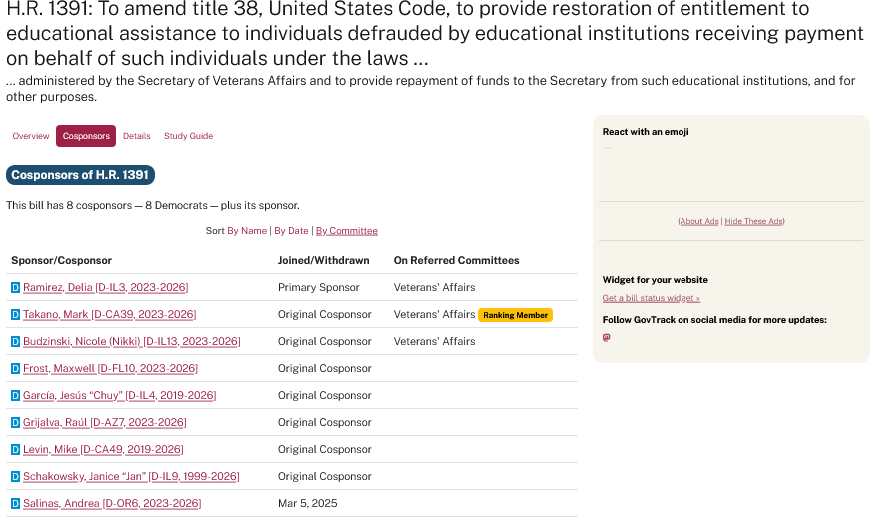
(HR 1391). Restoring the GI Bill for Vets Ripped Off by Predatory Schools
The US House Bill to restore GI Bill funds to those who have been ripped off by predatory schools has had little traction so far. While politicians like to say “thank you for your service,” only nine House members have signed on to the Bill, all Democrats. Both Republicans and Democrats have received funds by these schools, which also have lobbyists in DC to promote their agenda.
-
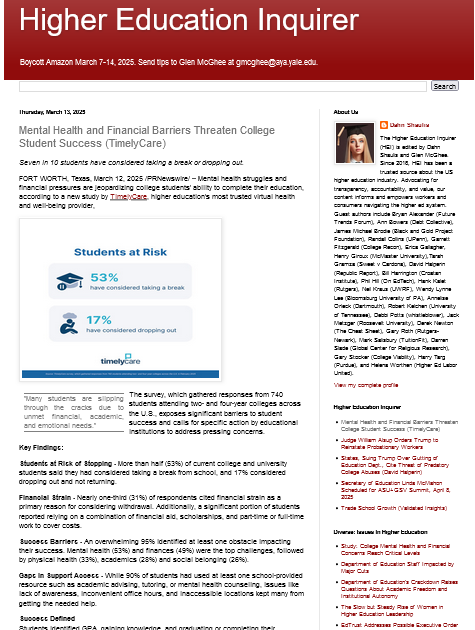
Higher Education Inquirer Now Includes RSS Feeds for Other Education Sources
The Higher Education Inquirer includes RSS feeds for Diverse: Issues in Higher Education, the Chronicle of Higher Education, and Inside Higher Education. You can see these feeds in the Web Version of HEI, in the right column. If you are using a mobile phone, click on the Web Version link near the bottom of the page. The Web Version also includes links to more than 500 Higher Education Inquirer articles and videos.

